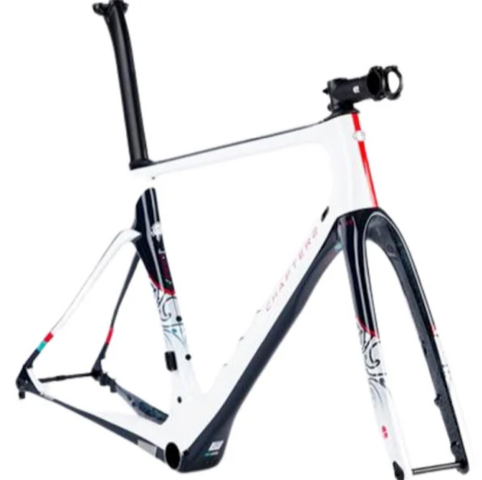An electric bicycle, or e-bike, is a popular and environmentally friendly option for daily commuting. These bicycles are equipped with an electric motor to assist users in pedaling. Electric bikes have almost zero running costs and require little maintenance. They also allow passengers to avoid gasoline costs, vehicle congestion and parking fees.
Most users purchase assembled models, but it is also possible to assemble an electric bike for a personalized ride. In this article, we'll cover what it takes to build your own e-bike.
Components
Building an e-bike allows you to customize the bike to your preferences. The following parts are essential to bringing this two-wheeled ride to life.
Mechanical components:
- bicycle frame
- Wheels
- Brakes
- Streaming
Electrical components:
- Electric motor
- Battery
- Engine control
- Acceleration or Pedal Assist System (PAS)
- Wiring and connectors
- Charger
Additional components:
- PAS sensor
- Display/Control Panel
- Lights
- Fenders
Optional components:
- Suspension
- Cargo Rack
bicycle frame
First, you will need a bicycle frame, which is the main structure of the bicycle. You can use one from an existing bike or buy a frame designed for electric bikes. The structure must be robust and compatible. It must be strong enough to support the weight of the battery and motor.
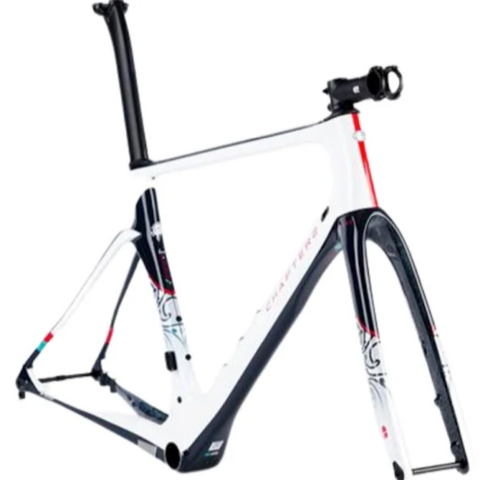
The wheels
There are many features to consider when choosing wheels for your e-bike. For starters, they must be compatible with your e-bike's frame and braking system. Different wheels are designed for disc or rim brakes.
You should also consider the terrain you will typically ride on. There are wheels designed for a variety of conditions – such as on-road, off-road or a combination.
Generally, e-bikes are heavier than conventional bicycles due to the additional weight of the motor and battery, so it is also essential to check the weight capacity of the wheels to ensure they can handle the load without compromising safety and performance.
Additionally, if you are going to install a hub motor, the wheels must be compatible with the motor's specifications. Bottom bracket and chain-stay clearance are also essential considerations for mid-drive engines.

The brakes
Electric bikes travel faster than conventional bikes, so good brakes are an essential safety measure. Electric bikes typically use disc or rim brake systems.
Disc brakes (hydraulic or mechanical) are more powerful and offer better performance, especially in wet conditions. They tend to be the braking system of choice. Rim brakes are lighter but may offer less control in adverse weather conditions. You'll also want to consider brake pads, which come in different materials, for better braking performance.
Although electronic brake sensors are optional, they are recommended. These sensors immediately turn off the electric motor when the brake lever is pressed to ensure safety. They are also useful for activating regenerative braking on the electric motor. Regenerative braking systems capture and convert kinetic energy back into electrical energy, charging the battery. While regenerative braking can extend the bike's range, it should not replace standard brakes.
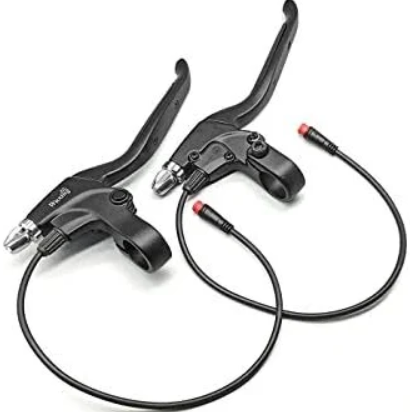
The powertrain
The transmission system of an electric bicycle is made up of components that transfer power from the engine to the wheels. The drivetrain typically consists of a chain, cassette, derailleur, freewheel, and torque sensor.
The chain transfers power from the crank to the cassette (rear gears). The cassette provides different gear ratios for climbing, cruising or tackling challenging terrain. It may be necessary to adjust the drivetrain, such as the chainrings and cassette, to accommodate the engine.
The derailleur moves the chain through the cassette and changes gears. Freewheeling allows the wheels to turn freely during deceleration, even with the engine in gear. The torque sensor measures pedaling force and adjusts motor assistance to provide a smooth riding experience. Derailleur and torque sensor are optional but recommended.

The electric motor
The motor is the heart of an electric bike and what sets it apart from a typical bicycle. The motor converts electrical energy from the battery into mechanical energy to propel the bike forward. Choosing between a pedal-assist bike (pelec) or an all-electric bike depends on several factors, including your budget and your speed and performance preferences.
In pedelecs, mid-drive motors are commonly used and positioned close to the pedals to assist with pedaling. Typically, pedelecs are also equipped with sensors to detect the cyclist's movement and pedaling force. The system then provides electrical assistance proportional to the pilot's effort.
In an electric-only system, the bike relies entirely on an electric motor. It uses a brushed or brushless hub motor mounted on the wheel. Some electric-only bikes (even with hub motors) incorporate internal gear hubs within the wheel to eliminate the need for a derailleur and cassette. However, most hub motors are not connected to the bike's gears, proving to be slightly less efficient on challenging terrain. Electric bikes typically only have one gear, offering limited torque or speed that the full range of gears can provide.
Some high-performance electric bikes also employ mid-drive motors for better power transfer, weight distribution, and smooth riding experience.
When selecting an electric motor for your e-bike, the most important factor to consider is its power. Electric bicycle motors have powers of 200 to 1000W or more. A higher horsepower motor can handle more torque, but requires a higher capacity battery. A higher horsepower motor will discharge the battery faster despite providing more torque. Speed-pedelec e-bikes with a motor greater than 750W require registration or license.
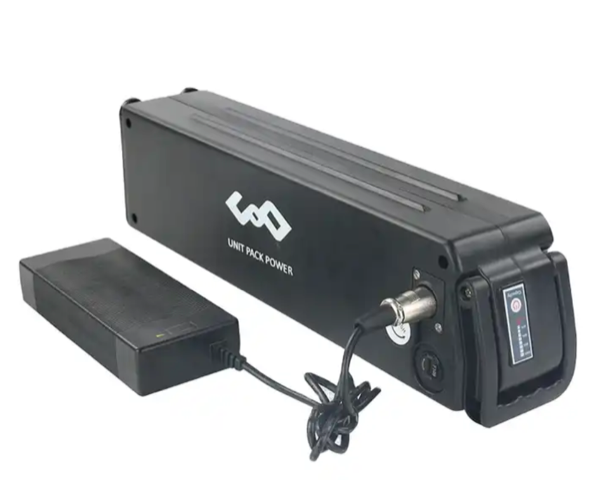
The battery
The battery is the heaviest and most expensive part of an e-bike, providing the energy to run the motor. All modern e-bikes run on lithium-ion (li-on) batteries, which are relatively light, powerful and offer a long cycle life. Lithium-ion batteries typically last six to seven years and are eight to ten times lighter than other battery types.
The cells of a lithium-ion battery are arranged in series and parallel, determining the voltage and capacity of the battery pack (amp-hours or Ah). The voltage of e-bike batteries ranges from 24 to 72 volts, and the capacity ranges from 250 to 1000 Wh. Battery capacity is measured in watt-hours, which influences the e-bike's range.
For most e-bikes, a battery with a capacity of 250 to 350 Wh is enough to travel 25-40 km on a single charge. 400-500 Wh batteries can extend this range to 40-65 km on a single charge. High-performance e-bikes use 600 to 750 Wh batteries, offering 65-95 km or more on a single charge. 1000 Wh batteries are typically used in cargo e-bikes or for heavier riders.
E-bike batteries are usually cylindrical. When choosing or maintaining an e-bike battery, it is essential to follow the manufacturer's recommendations and guidelines. Regular charging, avoiding deep discharges, and storing the battery in a cool, dry location can help maximize its lifespan and performance.

The engine controller
The engine controller is responsible for regulating power from the battery to the engine, protecting it from damage. It manages speed based on rider information and settings. It must be compatible with the battery and engine voltage.
Most e-bikes have brushless motors, which cannot work without alternating current. Thus, a motor controller converts the DC voltage from the battery into three-phase alternating current for the motor windings.
On pedelecs, the motor controller is placed on the handlebars and is used to adjust the level of assistance required when pedaling.
On electric-only e-bikes, a throttle-based controller is typically used. There are two types of accelerators: twist-grip and thumb-press. The throttle regulates voltage from 0v to full battery voltage supplied to the engine, increasing speed or electrical assistance. The accelerator is pressed down or pulled back for acceleration or assistance.
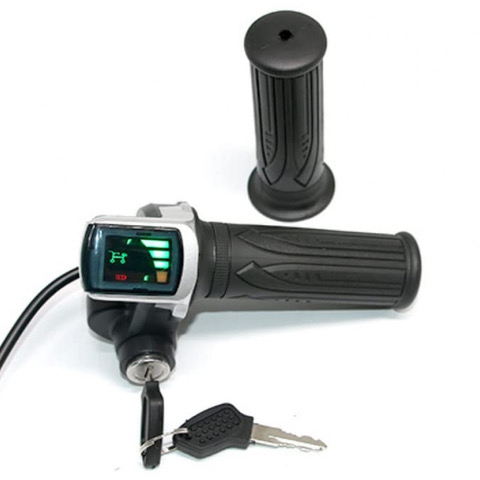
Accelerator or pedal assistance system (PAS)
A throttle allows an e-bike rider to manually control their speed based on engine power. Alternatively, a PAS “feels” the cyclist's pedaling and automatically adjusts motor assistance based on preset levels.
There are different types of accelerators such as thumb accelerators and twist/lever accelerators. Twist accelerators rotate the handle, and thumb push accelerators work by pressing your thumb on a paddle.
The throttle is connected to the engine controller via a throttle input plug. Typically, a magnet and Hall sensors are used by all throttles to determine throttle position. When the throttle is off, they supply 0.8–0.9V; when the throttle is applied, they increase to 3.6-4V.
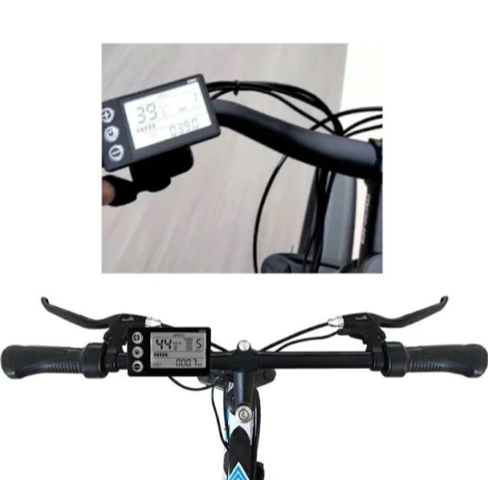
Wiring and connectors
Proper wiring and connectors are required to securely attach e-bike components. Wires must be routed and protected in an organized manner to ensure safety and reliability.
Charger
A compatible charger is required to charge the battery and must match the battery specifications. It is advisable to use the charger recommended by the manufacturer to avoid damage to the battery.
PAS and torque sensor
The PAS sensor is necessary on a pedelec to detect the rider's pedaling movement and adjust the motor assistance accordingly. A PAS sensor can be a speed, torque or cadence sensor. Some PAS use a combination.
Display/Control Panel
A control panel displays information such as the electric bike's speed, battery level, and pedal assistance level. It is usually mounted between the handlebars.
Lights
Lights are essential for safety when riding at night.
Fenders
In wet conditions, fenders help keep the rider dry.
Suspension
Quality suspension makes the ride more comfortable, especially on rough terrain. An e-bike can have front suspension only, rear suspension only, or full suspension.
Cargo Rack
You can install a charging rack to carry shopping or other equipment on your e-bike.

